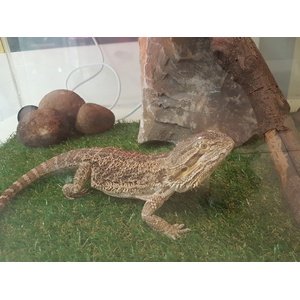Resource Description
We are using animals (reptiles, arachnids, amphibians and insects) to engage students in science, mathematics and english. Students have all the choice and I have a 'yes' motto. So far the students have decided to plan, design and implement the following ideas.
- Building a Lizard pit in the middle of the classroom. This has invoved mathematics (budgeting, area, perimeter, volume, pythagoras, unit conversion, rates, data collection and analysis), science (testing substrates, developing investigations to measure temperature output and insulation methods), english (ordering and emailing suppliers, researching animal needs and following animal ethics)
- planning and designing vivarium accessories (STEM)
- planning, designing and building a turtle enclosure(STEM)
- converting a rabbit hutch into a monitor enclosure (STEM)
- cricket breeding (STEM)
- snake breeding programs - including building incubators and snake nurseries (STEM)
- going to primary schools and nursing homes to educate the community
- going to the royal show to educate others
- creating a photo booth for people to get pictures with the reptiles
- Aboriginal art - indigenous perspectives and stories about the animals
- YouTube clips on animal care and maintenance
- building a waterfall in a tank to create humidity for tropical species
- building watering and feeding devices - timed for weekend care (STEM)
- developing live web feeds and websites
- information posters were suggested- however students were encouraged to create a digital presentation instead.
--to name a few (our ideas wall is packed)
There are no worksheets and no 'explicit' teaching. Students learn skills when they need to know them. (For example, they learn about volume and rates when they need to calculate the amount of de-chlorinator needed for aquariums)
All students come into class and participate in either a learning activity/project and a maintenance task.
All students have to participate in an induction process which involves how to properly handle and look after animals, how to identify stressed animals and how to maintain records for animal ethics.

